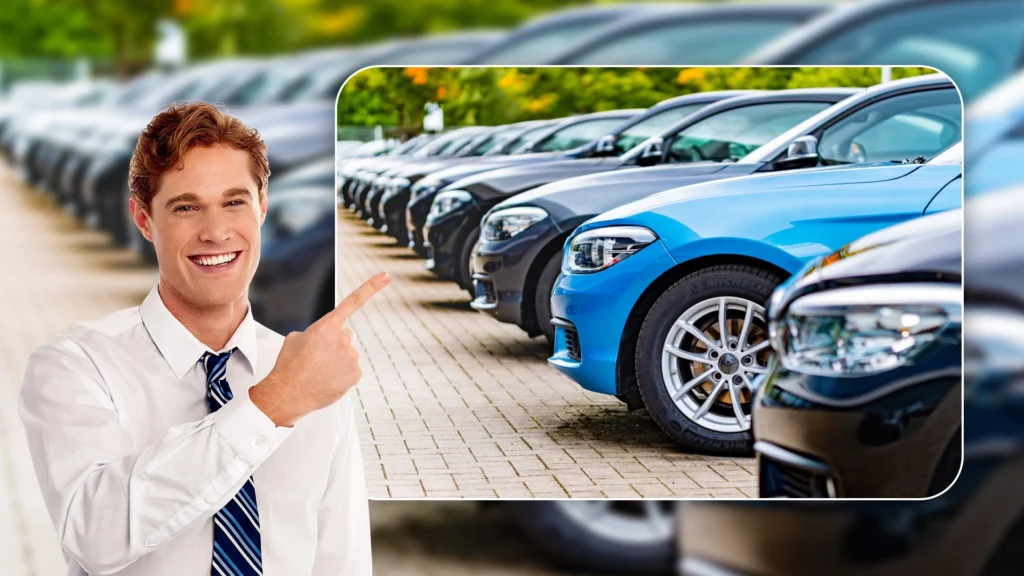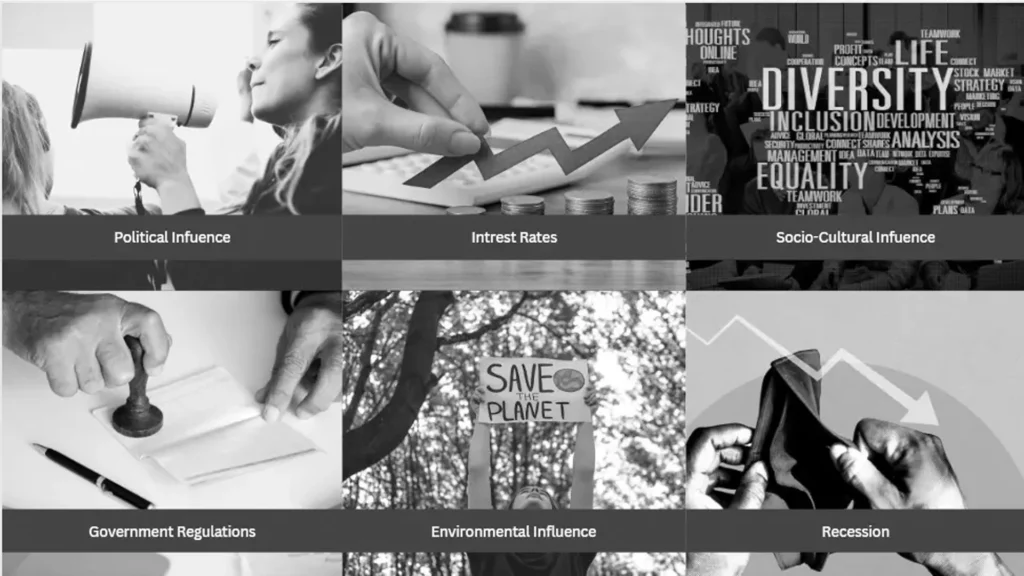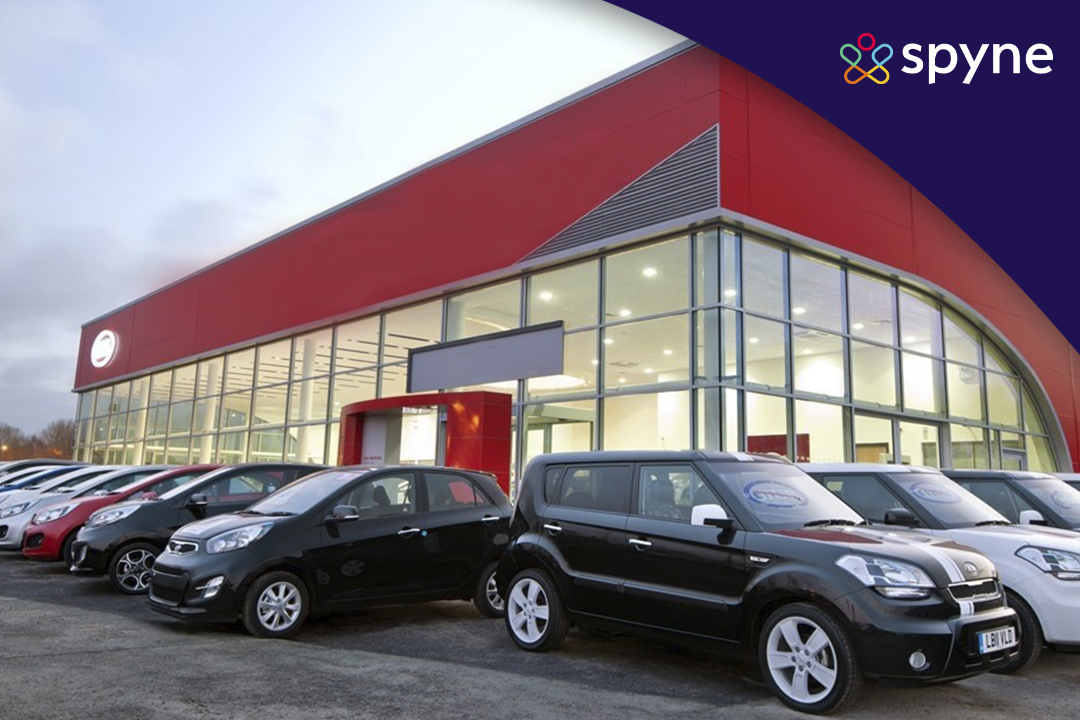Welcome to the world of used car dealerships: a thriving business offering a wide array of pre-owned vehicles to eager customers. In this blog, we delve into the ins and outs of the used auto dealership industry, exploring its market segments, crucial factors for success, and the legal requirements involved. Discover the strategic steps to start and run a prosperous dealership, from understanding your target market to optimizing advertising strategies.
We’ll also highlight the significance of customer service, the impact of external factors, and the importance of a strong online presence. Buckle up as we embark on this exciting journey into the world of old car dealerships!
What Do You Mean by Used Car Dealership Business?
It is a business that sells used cars based on a dealership contract between a seller and a buyer. It is simply a place where a used car can be purchased and a car loan can be arranged. Used car businesses often also sell maintenance and accessories. Shoppers for used cars would start online and then come to a used car dealer to look for what is on offer. To browse used cars, they would also travel to used car lots (A parking lot where used cars are parked for display in order to find a buyer).

The National Association of Independent Automobile Dealers has 20,000 member dealerships from across the nation, and it includes small family businesses such as CarMax, with 175 locations across the country. Their staff might usually contain people who are specialized in the models they sell.
Importance of Used Car Dealerships
Used car dealerships play a crucial role in the automotive industry, offering numerous benefits and services that cater to the needs of customers looking for pre-owned vehicles. Here’s a closer look at the importance of used vehicle dealerships:
1) Trust & Reputation
It actively build trust by providing reliable service and fair deals. They offer certified pre-owned programs to enhance peace of mind.
2) Brilliant Quality Used Vehicles
Dealerships actively ensure the quality of their inventory, thoroughly inspecting and reconditioning each vehicle for customer satisfaction.
3) Financing
They actively provide flexible financing with competitive rates and tailored plans to suit various credit profiles.
4) Customer Service
Dealerships actively prioritize personalized assistance, guiding customers through the buying process and offering after-sales support for a positive experience.
5) Post Sales Assistance
Many dealerships offer after-sales support, including maintenance services, warranties, and assistance with registration and paperwork, to ensure a positive ownership experience for their customers.
Overall, It plays a vital role in the automotive market by providing trustworthy, high-quality vehicles, flexible financing options, and excellent customer service. They serve as a valuable resource for individuals seeking affordable and reliable transportation solutions.
Business Model of Used Car Dealerships
Used car dealers make money by buying cars at lower prices and reselling them at markup. This is the basic business concept. Dealerships that buy cars through a variety of methods, including trade-ins, auctions, and direct sales to individuals. To ascertain each car’s resale worth, they evaluate its state, past performance, and level of market demand. Dealerships attempt to provide value to customers while maximizing profit margins through marketing, negotiating, and customer service to draw in buyers and facilitate sales transactions. To improve customer happiness and revenue streams, several dealerships also provide extra services including financing, warranties, and auto maintenance.
Key Segments of the Used Car Dealership Industry
The dealership’s customer lifecycle can be reflected in segmentation. The active, inactive, lost, and conquest consumers are some important ones to focus on when studying automotive clients. There are 5 market segments for cars:
- Demographic
- Geographic
- Technographic
- Psychographic
- Behavioral

Let us go through each one of them in detail.
Demographic
A used car dealer marketer could look at data on the income level of localities and decide to target the group that won’t be able to afford a brand-new car. Pre-owned car dealerships can also choose to split a zip code to better reflect the concentration of lower-income households.
Geographic
This segment looks at factors such as city limits, distance from point A to point B, and state lines. For example, if a lot of used car dealerships are already working in a city or a state, then it’s better to focus on a place where this service is not widely available. If you mark your customers on a map, then you will likely notice a hotspot, and you can focus your attention there to gain new customers.
Technographic
In this segment, we concentrate on how technology is being used in car dealership marketing strategies. For example, if a locality is using televisions as its favorite media, then it is better to reach them through ads on channels with high TRP from that area. If another locality where you want to advertise uses mobile phones, then it is best to use SMS as a good form to reach new potential customers.
Psychographic
In this segment, we chiefly target potential customers through conscious or unconscious messaging by targeting their beliefs. For many modest-income homes, the mindset is very traditional and an important part of life. You can convey to them how your services will help their beliefs. Another example is picking a locality where people are predominantly environmentalists; then advertising used electric cars at a cheaper cost will be quite successful.
Behavioral
In this segment, we look into customer behavior, such as browsing history, eating habits, and time spent on the best used car website. For example, a certain locality has a lot of single parents. So, a lot of the members of single households go to clubs. So, you can advertise through posters near these clubs.
How to Start a Used Car Business
If you are thinking about how to start a used car dealership, then you have come to the right place. Here we will tell you not only about how to start a used car business. Starting a used car business involves several key steps to ensure success. Here’s a simplified guide:

1) Licensing: Research and complete the necessary licensing requirements to operate an independent car dealership in your state. This often involves obtaining a dealer license, which may have specific requirements and regulations.
2) Start-up Funding: Secure the funding needed to launch your business. This may include personal savings, loans, investments from partners, or financing options specifically for car dealerships.
3) Location: Choose a suitable location for your dealership. Consider factors such as visibility, accessibility, zoning regulations, and target market demographics.
4) Inventory: Source vehicles for your inventory. This can involve purchasing cars from auctions, trade-ins, private sellers, or wholesale dealerships. Ensure you assess each vehicle’s condition, history, and market demand to build a desirable inventory mix.
5) Marketing: Develop an automotive digital marketing strategy to attract customers to your dealership. Utilize both online and offline channels such as websites, social media, advertising, and community outreach to promote your business and drive sales.
6) Sales and Customer Service: Train your staff to provide excellent customer service and sales support. Establish transparent pricing policies, finance used cars, and be responsive to customer inquiries and feedback.
7) Compliance and Regulations: Stay informed about legal and regulatory requirements for operating a used car dealership. This includes adhering to consumer protection laws, vehicle safety standards, and any local car dealership or state regulations governing automotive sales.
By following these steps and having a clear plan in place, you can increase your chances of success in starting and operating a used car dealership.
How to Run a Successful Used Car Dealership
Now you have understood and know how to start a used car lot. But now you need to learn how to run a used car dealership. Running a successful pre-owned car dealership is an endeavor that requires strategic planning and a customer-centric approach. By understanding your market, setting specific sales goals, and knowing the popular vehicle preferences, you can tailor your services and marketing strategies to meet customer demands effectively.
- Understand your market: Research demographics and car-buying seasons in your area.
- Set specific sales goals: Make them measurable, attainable, realistic, and time-based (SMART).
- Know popular car makes and models: Stock what your customers want to buy.
- Understand your customer base: Tailor your offerings and marketing to their preferences.
- Evaluate advertising effectiveness: Invest in channels that yield the best returns.
- Monitor sales rep performance: Use CRM data to identify strengths and areas for improvement.
- Implement talent management practices: Recruit, train, and incentivize staff for better performance and retention.
- Prioritize customer service: Keep customers engaged and satisfied to foster loyalty.
- Adapt continuously: Stay flexible and adjust your strategy based on market dynamics and feedback.
- Emphasize transparency: Build trust by providing honest information about vehicles and transactions.
strategies will help establish a reputable position, attract loyal customers, and achieve steady growth.
What External Factors Affect the Used Car Dealership Industry?
There are several factors outside of the industry which you must keep in mind. These are not usually caused by the auto industry but impact it gravely.

External factors that affect the used car dealership industry include
- Fluctuating inventory levels: Fluctuations in the number of used cars available as a result of market demand, trade-ins, and auctions.
- Interest rates: These fluctuations might affect financing choices and have an impact on what people decide to buy
- Union strikes: Labor issues in the automotive sector have the potential to impede production, which might have an impact on the availability of both new and used cars as well as the supply chain.
- New laws and regulations: Changes in legislation related to emissions standards, safety requirements, or consumer protection laws can impact dealership operations and compliance costs.
- Inflation: Rising costs for products and services can have an impact on pricing policies, operational expenditures, and consumer purchasing power.
These external factors can significantly influence the profitability and operations of used car dealerships, requiring adaptation and strategic planning to navigate effectively.
Used Car Dealership Business Start-Up Cost
So, you have decided to enter the used car business. But you need to have used car business ideas and start-up costs to succeed in the endeavor. Usually, start-up costs include
- License and permits
- Advertising and promotion
- Utilities
- Insurance
- Dealership facility
- Equipment and furniture
- Initial Inventory
The startup costs for used car dealerships may vary, but it can range from $100,000 to $95,000 or more. These numbers are found from the following sources:
- Profitable ventures have estimated that the used car business costs $250,000 – $95,000.
- CAPPracticeAdvisor has estimated startup costs can be in the range of $100,000 – $200,000.
With such a high startup cost, markup on used cars can be less if the right strategies are not implemented.
Economic Analysis of Used Car Dealership
In the last five years, there has been an increase in the number of used car dealers. It increased at a CAGR of 5.1% to reach an estimated of $181.2 billion in 2023. The revenue will fall around 4.4%, but the profit will rise to an estimate of 2.7%. The global market size is expected to be worth around $1.2 trillion. The pre-owned car dealership industry generates over $700 billion in annual revenue in the United States.
Choosing a Location for a Used Car Dealership
Choosing a location for your used car dealership business can be difficult. Ideally, it should be in a place where it is easy to access and complimented with vehicle traffic that attracts customers. Your second-hand car business ideas should start by deciding the area you want. Then, later on, focus on finding an open lot with enough space for your vehicles that you are going to add in your future inventory.
There are key considerations while finding a location:
- Accessibility
- Vehicle Traffic
- Lot Size
- Visibility
- Safety and Security
- Nearby Businesses
- Cost-effectiveness
Legal Aspects of Starting Used Car Dealership
You will need some legal documents to start a pre-owned vehicle dealership. These documents will register you as a dealer, and the government will be able to regulate your business more effectively for the benefit of both. Also, show a window label called a “Buyers Guide” on the used cars you are offering. Car dealer license requirements depend upon the state in which you have to operate. Your license will also vary depending on what kind of cars and services you are going to offer. A used vehicle dealer license will allow you to sell certified preowned vehicles in retail or to the wholesale business.

A certified pre-owned vehicle is typically an accident-free and a low-mileage car that has been certified by the factory of the model to which the car belongs. You can get this by completing a used dealer license application through your state’s motor vehicle commission. A small business lawyer can help with that. Here are other documents required to run this business.
Distribution agreement
Car Dealership Distribution agreements enable retailers and wholesalers to sell a manufacturer’s product. Car dealerships sign these with vehicle suppliers.
Sales Commission Agreement
Sales commission agreements at car dealerships set terms for the compensation of the employees for selling the vehicle. It is needed when you are working with a sales representative who may showcase terms & conditions ( ex. used cars for sale under 10000).
Bill of Sale
Bill of Sale offers customers proof of purchase. This is used to transfer ownership of the vehicle to customers.
Employment Contract
Car Dealerships Employment Contract sets terms and guidelines for a relationship between employer and employee. It will be needed when you require a full-time employee.
Liability Waiver
For Car dealerships, a Liability Waiver separates the owner from customer actions. This is signed by the customer, usually during test drives.
Commercial Lease
Commercial Leases set the terms for renting commercial property. You will need it when you are renting an office space or any other commercial facility.
Land Lease Agreement
A Land Lease Agreement is specifically when you rent commercial land. These are needed while renting car lots.
Loan Agreement
Loan Agreements establish terms to lend credit to customers. Often car dealerships also provide credit to customers, and this is when you will need it.
There are also insurance requirements for used car dealerships, for example, General Liability insurance. This insurance covers negligence or breach of claims. This is needed to protect operations if an adverse claim prevails against it.
Future Trends in the Used Car Dealership Market
The future of the used car dealership market in India is quite promising with a projected CAGR of 15.10% reaching USD 55.49 billion by 2028. Here are some key trends to watch:
Growing Demand
1) As incomes rise, more people can afford car ownership, driving demand for both new and used cars.
2) Increasingly, people prioritize personal mobility solutions, pushing used car demand as a more affordable option.
Evolving Market Landscape
1) The organized sector (dealerships and online platforms) is expected to grow significantly, currently at 10% but projected to reach 50% by 2025. This indicates a shift towards transparency and trust-based transactions.
2) Online used car marketplaces will continue to play a crucial role in connecting buyers and sellers, offering wider selection, convenience, and price transparency.
3) Digital tools like virtual tours, online financing, and AI-powered valuation will transform the buying experience, offering more efficiency and personalization.
Emerging Focus Areas
1) Demand for CPO vehicles with manufacturer warranties and quality assurance is expected to rise, offering peace of mind to buyers.
2) As the EV market matures, the used EV market will follow, presenting new opportunities for dealerships that adapt to the technology and infrastructure needs.
Challenges and Opportunities
1) The increasing number of players in the market will intensify competition, demanding better customer service, innovative offerings, and competitive pricing strategies.
2) The used car market is susceptible to economic downturns, requiring dealerships to be adaptable and manage inventory effectively.
By anticipating these trends and adapting to the evolving landscape, used car dealerships in India can capitalize on the significant growth opportunities and continue to play a vital role in the automotive ecosystem.
Conclusion
Just like any startup, starting a used car dealership will take commitment, effort, and luck. It is a rewarding business, and you will be doing a service to society by providing cars to those who could not afford to buy a new one. More competition joins this industry every second you wait, so all the best. It is worth owning certified pre-owned cars if you can’t afford a new one, as they provide comfortable travel at a reduced cost.

















